Dracaena flower: how to care for a beauty from the tropics
The homeland of the popular "little palm" is Africa and South Asia, the Canary Islands. Dracaena is loved for the touch of exoticism, which she adds to the familiar landscapes. Taking care of the "dragon's tail" is not difficult if you know about the needs of the plant.
Content
- Temperature and lighting requirements
- All about watering and air humidity
- How to transplant a flower
- How to propagate dracaena on your own
- Factors that will provide the plant with health
Temperature and lighting requirements
There is an opinion according to which dracaena loves the shadow. It is not entirely true. Indeed, the plant tolerates partial shade. However, in a dark place, there will be developmental and growth problems. The flower will not be happy with bright sunlight either. From direct rays, it will begin to dry, the tips of the leaves will turn yellow.
It is important to find a "sweet spot": sufficient soft, diffused lighting. The plant will also not refuse artificial rays.
All types of shrubs develop successfully under the influence of lighting devices.
Dracaena will feel good by the east or west window. In summer, the sun can be quite aggressive. In order to prevent burns, the flower is shaded.
"Dragon tails" with dark green leaves do not need lighting as much as varieties with lighter or variegated foliage. If a multi-colored dracaena has lost the brightness of colors, it has little sunlight.
A resident of the tropics needs warmth:
- She prefers a constant, moderately warm temperature regime. Ideally, stable 22-23 ° C.
- Dracaena will normally withstand the heat. When the temperature rises to 25-27 ° C, it will react with a slowdown in growth. In the summer, this situation is quite acceptable.
- In winter, the plant feels good at 15-17 0С. It is very bad for a flower if the room is colder.
- With the arrival of heat, the shrub can be taken outside. He is carried away from the garden or balcony with the arrival of the first night frosts.
Dracaena does not tolerate drafts. He needs either a uniform breeze from all directions, or a secluded place protected from gusts of wind. Dracaena is a lover of gentle light and warmth.
All about watering and air humidity
A moisture-loving flower needs sufficient water. The intensity and frequency of watering depend on the location and volume of the container with the plant, the substrate, and the pore of time.
When and how to make dracaena:
- If 2-3 cm of the topsoil is clearly dry, it's time to give the dragon a drink.
- You should not be too zealous: for a flower moderate watering preferable to excess moisture. The ideal option is not to forget about the plant and systematically water it.
- The previously loosened soil is moistened with filtered water. You can use boiled tap liquid.
- In summer, dracaena is watered once every 2 days. The frequency is changed depending on the state of the topsoil. If the soil is wet, do nothing.
- Withering leaves "tell" that dracaena is low in liquid.
- With the arrival of winter, the plant falls asleep. The need for watering is reduced to 1 time in 3 days. It is necessary to monitor the condition of the soil and, if necessary, moisten it when the flowerpot is next to a warm battery.
Tropical flowers love damp air. There are species (Dracaena Dragon, Dracaena Godsef) that feel normal at minimum humidity values.
For all other varieties frequent spraying - a mandatory event.
After the water procedure, do not expose the dracaena in the sun: it will be covered with burns.
When the thermometer drops below 150C, spraying is stopped. The plant will not refuse bathing in the shower or rubbing the leaves with a damp sponge.
One of the main enemies of dracaena is dry air and soil.
How to transplant a flower
The acquired plant needs time (approximately 2 weeks) to adapt to new conditions. After that, the "dragon's tail" is determined for permanent residence.
Secrets of a Successful Transplant:
- Both a plastic and ceramic pot will work. It is worth purchasing products in which the height is 30-40% more than the width.
- Before planting, the flowerpot is washeddespite its apparent purity.
- Expanded clay drainage is placed at the bottom. This layer should be approximately 10% of the height of the container.
- The next ball is soil (15-25% of the height of the flowerpot).
- Now it's time to place the flower, filling the space between it and the walls of the dish with soil.
- The soil is compacted lightly.
The new occupant of the apartment needs watering, but no fertilizers. The use of special substances that stimulate the development of rhizomes is allowed. During the first 2 weeks no additional feeding is needed.
Young dracaena will have to be replanted every year. With an adult plant, the hassle is much less: work is carried out as needed, once every 2-3 years. Sometimes the "quiet period" increases to 5 or even 10 years.
The flower is transplanted with the onset of spring (March-early April). In a rather large tub, it is allowed to simply replace the top layer of the substrate.
Shrub soil is sold at any specialty store. It can be a universal product or a special composition for dracaena and palms. Preparing the soil on their own, mix in equal amounts of leaf, peat, turf soil, sand and humus... Correct planting of a plant is the key to its health and active growth.
How to propagate dracaena on your own
The shrub is cultivated using cuttings and cuttings from the top. They start work in the spring, because at this time the plant wakes up and begins to actively develop.
Sequence actions when grafting:
- A strong young shoot is selected.
- With a sharp knife, it is cut into pieces of 3-5 cm so that each one has at least 2 buds. In this case, it is important not to crush the stem.
- On one side of the cutting, the bark is incised.
- The stem is stuck into the previously prepared soil (a mixture of peat and sand).
- The structure is placed in a warm place, away from direct sunlight.
It is important to keep the humidity in the room with the cuttings under control. In good conditions, the first shoots will appear in 1-1.5 months. Caring for them consists in systematic spraying with clean water.
The layering is the top of the dracaena, which is placed in a container of water at room temperature.
For disinfection purposes, an Activated Carbon tablet is added. After 3 months, roots will appear. This is a signal that it is time for the cut to grow in the ground on a permanent basis.
There is another way to grow new plants:
- An incision is made on a developed shoot, which is wrapped in wet moss or polyethylene.
- After waiting for the roots to appear, the process is separated from the mother dracaena and planted in the ground. Garden pitch will help to "heal" the incisions on the plant.
- Pruning can be considered a breeding tool. At the same time, it is a way to stimulate the development of lateral kidneys.
- After the procedure, planting material appears, and the branching process is activated.
Work begins in the spring or early summer. Dracaena is cut, the height of which is not less than 30 cm.The distance between the cut point and the last leaves on the bare stem is 5 cm.Having decided to carry out such work, it must be borne in mind that the main stem will no longer grow.
Sharp an escape is cut off with a knife... The cut site is processed with crushed Activated Carbon and Zircon. The planting material is placed in water before rooting, and the dracaena is placed in a warm room. With perseverance and patience, it is not difficult to propagate an exotic flower.
Factors that will provide the plant with health
An actively developing shrub needs feeding. This period begins with the arrival of April and ends at the end of August. Complex fertilizers are used every 2 weeks.
The use of various home remedies is effective. Top dressing with nettle tincture will favorably affect the growth of the flower. The yellow tips of the leaves "scream" about the dryness of the air or soil. Brown spots are sunburn.
The plant needs help if it is frozen or overheated. The rescue operation consists in removing damaged foliage and feeding with Cytovite, Epin or HB-101.
It is important to periodically inspect dracaena in order to notice the pests that have appeared in time. The flower is susceptible to attack by scale insects, spider mites and thrips. In the fight against uninvited guests, an arsenal of appropriate insecticides will help.
Dracaena suffers from a violation of the water and light regime, as well as the appearance of parasites.
Easy care of the "dragon's tail" is within the power of anyone who wants grow a tropical shrub at home... Dracaena will repay the care by decorating the interior.
More information can be found in the video.



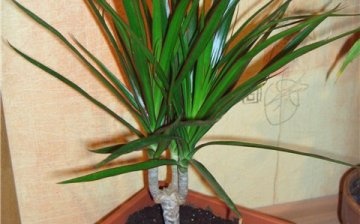
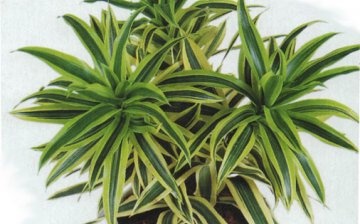

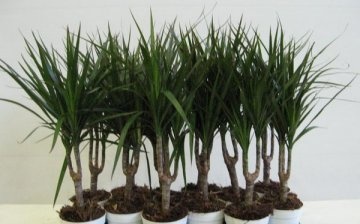
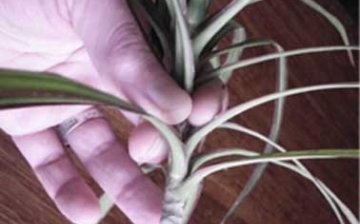
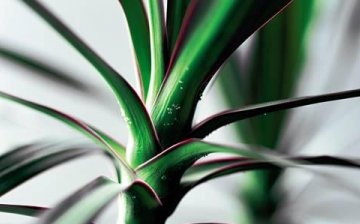






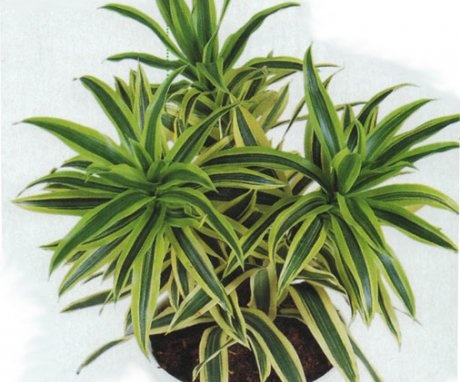
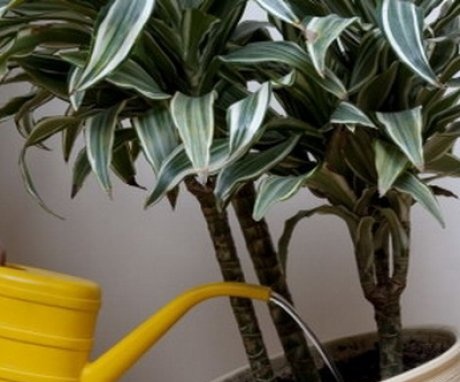
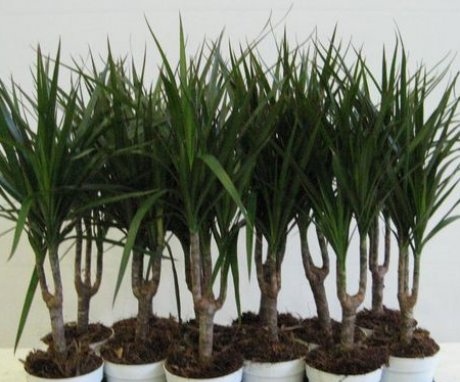

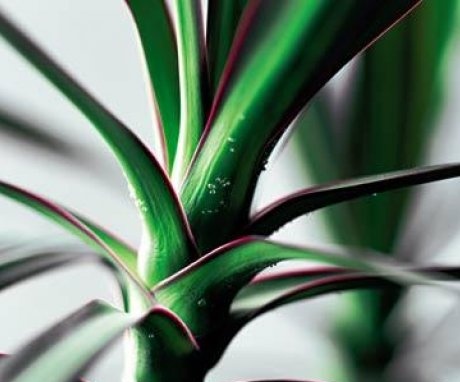
And what are the positive qualities of dracaena? I read that the plant is energetically very strong, it influences marital relations.